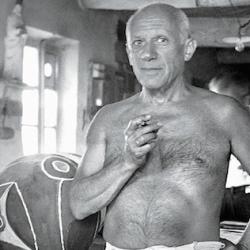Since I’ve said some favorable things about Virginia Postrel’s The Substance of Style , I should mention Anne Hollander’s very smart review in the December 22 TNR . Hollander is, after all, far better qualified than I to speak on matters of taste and fashion. One of Hollander’s essential points against Postrel is that the current trend is not so much the exaltation of design, since design was a key feature of modernist aesthetics and culture. What is new is the fact that design now calls attention to itself, design designed to highlight its own designed-ness. There is a lot of wisdom is this review, but a few quotations will have to suffice:
“Right now, we cannot find plain and simple at all, because they have been eclipsed by Plain and Simple, a category now available for the design of housewares and furnishings in a variety of shapes and shades suggesting the Shakers, the Fifties, or Art Deco. There is no doubt that waiting rooms design with living room-like care can be nicer than those with hard benches lined up against blank walls; but sometimes well-worn austerity seems just right for the mood and the moment. The look of a modest lunch counter that has evolved over time without effort to compete in the style race is getting more and more appealing ?Eand much more rare. Even waiting in line at the notably unstylized post office has become something of a relief.”
“During the twentieth century, many decorative things came to be designed on the model of useful objects, so that an elegant bracelet might suggest gears or a suspension bridge. Of course, formal lapses could occur, and some tableware might too much resemble dental instruments, while many buildings depressingly did resemble shoeboxes. But toys still were made in many colors and looked entertaining in themselves; and now we have manifestly entered a time when everything aims to look like a toy, including huge buildings, and many fashionable garments aim to look like clown costumes. Postrel seems to welcome this aesthetic condition, which appeals to a large range of infant sensibilities rather than trying to propose a large range of adult standards.”
Underneath the apparent welter of variety and diversity that consumer goods now seem to offer, there is a basic sameness: “What prevailed during the epoch of standardization was the idea that everybody should be able to get the same thing; but now we believe that each person should be able to get exactly what he likes ‘the look and feel’ of. To market such an idea successfully it is still necessary to produce large numbers of the same thing, only in deceptively different-seeming varieties. Fashion becomes more noticeable than ever, since to sell succesfully all the varieties must still follow only the generally desirable trends in looks — a range of colors, yes, but only fashionable ones; a range of styles only within the pale of what’s generally desirable . . . . The persistence of basic sameness in the middle of a distracting false variety only helps to prove that doing what everyone else does seems to be a profound human need.”
Finally: “What has really come about in the last thirty years is . . . the same thing you see everywhere else in American lives: a new worship of diversity as good in itself, minus any active judgment of goodness and badness or harmony and disharmony within it. THOSE are the things that we now refuse to acknowledge, not the value of pleasure, artifice, and beauty.”















